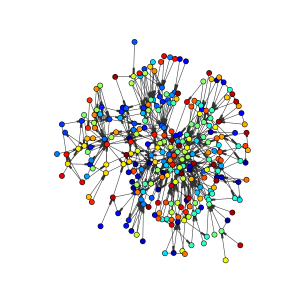Data:Geomaterials Vocab
Geomaterials Vocab dataset information page
Short Description
 |
| Simple visualization of part of the vocab |
Statement: A Structured Vocabulary for Geomaterials
Abstract:
(In roll-out stage March 2014)
Introduction
Word-based data are pervasive in the geosciences, even in the field of numerical modeling. Parameters and units, materials, processes, events are all identified linguistically. For example, in the context of numerical modeling for earth surface dynamics the CSDMS Standard Names (https://csdms.colorado.edu/wiki/CSDMS_Standard_Names) documents syntaxes used for parameter word-based namings.
As a contribution to earth surface modeling and data handling, a comprehensive vocabulary of earth materials is presented here. Geomaterials include soils, sediments, rocks, biogenic buildups, ice and snow, and man-moved and man-made materials. The vocabulary is presented as a number of resources, including an ontology document which is a subset of the total vocabulary structure. A paper on the vocabulary is being finalized.
Building the Vocabulary
The vocabulary is computed from a corpus of glossaries, dictionaries, thesauri, ontologies, classifications. It was necessary to compute it because of the great number of geomaterials terms now available – estimated to be 10^4. Manual efforts to create a structured vocabulary through ontologies have encompassed only ~300 terms with rudimentary relationships in several years of work (Geosciml 2012). By computing the vocabulary, quantitative linguistic measures of concept distance and scope can also be made.
The corpora used here were sourced from authoritative institutions such as British Geological Survey, US National Aeronautical and Space Agency (NASA), US Geological Survey (USGS), Society for Sedimentary Geology, CSIRO Australia, US Federal Geographic Data Committee, Center for Deep Earth Exploration (CDEX) in Japan, and the World Meteorological Organization (WMO). At last count there were 962 nodes (concepts) being served, and 1126 'strong words' from processing these corpora.
Components
Please see the detailed documentation that is in the served zip file. The vocabulary comes in three parts - general components, vocab for the geology ('litho') and cryology ('cryo') subthemes.
The tallies are: 2315 strongwords, 836 lithology concepts, 16 corpora, ##.
(i) A table of geomaterials concepts with their names, definitions, relationships, metrics and metadata. (ii) Tables of ‘strong words’ and weak words (the ‘stop list’) that are involved in describing the geomaterials concepts. The strong words are accompanied by frequency metrics, the sets of words which they associate with, levenstein variants, and stemmed morphologies. The strongwords are those that occur in the names of geomaterials concepts and are not in the stop-list. (iii) A formal ontology of subsumption relations (i.e., related, synonym, broader, narrower) expressed using SKOS and RDF logic systems in TTL syntax. (iv) (TBA) A semantic net of subsumption relations, and also quantitative strengths on the links between them.
Use cases
The vocabulary components provide a large resource which are needed for downstream software applications such as query mediation, semantic crosswalk, disambiguation, databasing.
(i) A query can be launched using a set of terms (e.g., “feldspar-bearing sediments with glauconite”). The query is using local vocabulary and could alternatively we written “feldspathic sediments with verdine”. A ‘smart search’ (‘concept search’) drawing on a semantic net resource is able to search for both expressions – and also narrower ones such as “glauconitic albitic sands”. This is ‘query mediation’ and ‘query extension’. (ii) Crosswalks relate and compare two concepts. How close are they, do they subsume, what are their neighbours ? (iii) Disambiguation is a similar concept: given a homonym like “caterpillar”, animal and tractor can be distinguished by their typical word-associates in the text, with the patterns defined in a structured vocabulary like that served here.
Data format
| Data type: | Substrates |
| Data origin: | Measured |
| Data format: | ASCII |
| Other format: | |
| Data resolution: | All |
| Datum: | All |
Data Coverage
Spatial data coverage: All
Temporal data coverage: Time series
Time period covered: All
Availability
Download data: http://instaar.colorado.edu/~jenkinsc/dbseabed/resources/geomaterials/GeomaterialsVocab.zip
Data source: http://instaar.colorado.edu/~jenkinsc/dbseabed/resources/geomaterials/GeomaterialsVocab.zip
